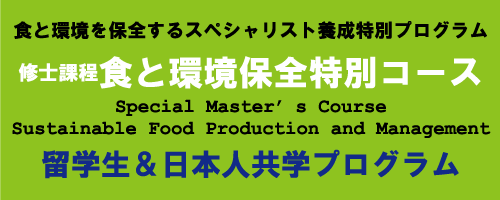領域名 食品科学
教員氏名 吉 原 明 秀
研究分野 酵素利用学

研究キーワード:希少糖,微生物,酵素

最近の研究課題
1.自然界から新規酵素および新規微生物の探索とそれらを用いた希少糖生産
身の回りに数多く存在する微生物は、様々な酵素を持っています。本研究では、自然界に多量に存在する単糖から、自然界 に微量にしか存在しない希少糖に転換できる新規微生物や新規酵素を探索します。得られた微生物や酵素を用いて様々な希少糖の生産を行っていきます。

2.様々な微生物や酵素を用いたデオキシ希少糖の生産
希少糖の生産は、アルドース・ケトース間の異性化反応、ケトース・ケトース間のエピ化反応、ポリオール・ケトース間の酸化還元反応、ポリオール・アルドース間の酸化反応によって行われる。本研究では生理活性を有する新たな希少糖の生産を目指し、出発原料にデオキシ糖を用いて様々な酵素反応を行い新規デオキシ希少糖の生産を行っていきます。

3.有機合成化合物から希少糖誘導体の生産に関する研究
有機合成の手法を用いることで自然界に存在しない糖質が合成できます。これらの化合物を出発原料として、微生物や酵素を使う事で、生理作用を持つ新しい糖質が生産できます。これまでに血糖値上昇抑制効果などが知られる16種類のノジリマイシンの異性体を生産しています

代表的な研究業績

- Akihide Yoshihara et al. (2013) Isomerization of deoxyhexoses: green bioproduction of 1-deoxy-D-tagatose from L-fucose and of 6-deoxy-D-tagatose from D-fucose using Enterobacteragglomerans strain 221e, Tetrahedron: Asymmetry, 19 (6), 739-745
- Pushpakiran Gullapalli et al. (2010) Conversion of L-rhamnose into ten of the sixteen 1- and 6-deoxyketohexoses in water with three reagents: D-tagatose-3-epimerase equilibrates C3 epimers of deoxyketoses, Tetrahedron Letters, 51 (6), 895-898
- Devendar Rao et al. (2009) A concise approach to the synthesis of all twelve 5-deoxyhexoses: D-tagatose-3-epimerase—a reagent that is both specific and general, Tetrahedron Letters, 50 (26), 3559-3563
- Andreas F. G. Glawar et al. (2013) An approach to 8 stereoisomers of homonojirimycin from D-glucose via kinetic & thermodynamic azido-γ-lactones, Organic & Biomolecular Chemistry, 11 (40), 6886-6899
Research Area: Food Science
Research Specialization: Applied enzymology
Name: YOSHIHARA, Akihide

Keywords:Rare sugar, Microbe, Enzyme

Recent Research
1. Screening of microbe and enzyme. Production of rare sugars using their microbe and enzymes
Microbe produces a lot of enzymes. Rare sugars are produced by their biotransformation. Therefore many researchers isolate microbe for effective production of rare sugars. In this research, We screen various rare sugar producing microbes and enzymes. Optimum condition determine for rare sugar production, We try to produce a lot of rare sugars

2. Production of rare sugar derivatives using microbial and enzymatic reaction
Rare sugars are produced by several enzymes. These enzymes are able to classify into following four groups.
・Isomerase catalyzes reversible aldose-ketose isomerization
・Epimerase catalyzes reversible ketose C-3 epimerization.
・Dehydrogenase catalyzes the oxidation of polyols to corresponding ketoses.
・Oxidase catalyzes the oxidation of polyols to corresponding aldoses.
In this research, we try to produce novel rare sugar derivatives that have physiologically activity by microbial and enzymatic reactions. We focus to deoxy monosaccharides, azido monosaccharides and their derivatives.


Publications

- Akihide Yoshihara et al. (2013) Isomerization of deoxyhexoses: green bioproduction of 1-deoxy-D-tagatose from L-fucose and of 6-deoxy-D-tagatose from D-fucose using Enterobacteragglomerans strain 221e, Tetrahedron: Asymmetry, 19 (6), 739-745
- Pushpakiran Gullapalli et al. (2010) Conversion of L-rhamnose into ten of the sixteen 1- and 6-deoxyketohexoses in water with three reagents: D-tagatose-3-epimerase equilibrates C3 epimers of deoxyketoses, Tetrahedron Letters, 51 (6), 895-898
- Devendar Rao et al. (2009) A concise approach to the synthesis of all twelve 5-deoxyhexoses: D-tagatose-3-epimerase—a reagent that is both specific and general, Tetrahedron Letters, 50 (26), 3559-3563
- Andreas F. G. Glawar et al. (2013) An approach to 8 stereoisomers of homonojirimycin from D-glucose via kinetic & thermodynamic azido-γ-lactones, Organic & Biomolecular Chemistry, 11 (40), 6886-6899
このページの管理者:管理者

















